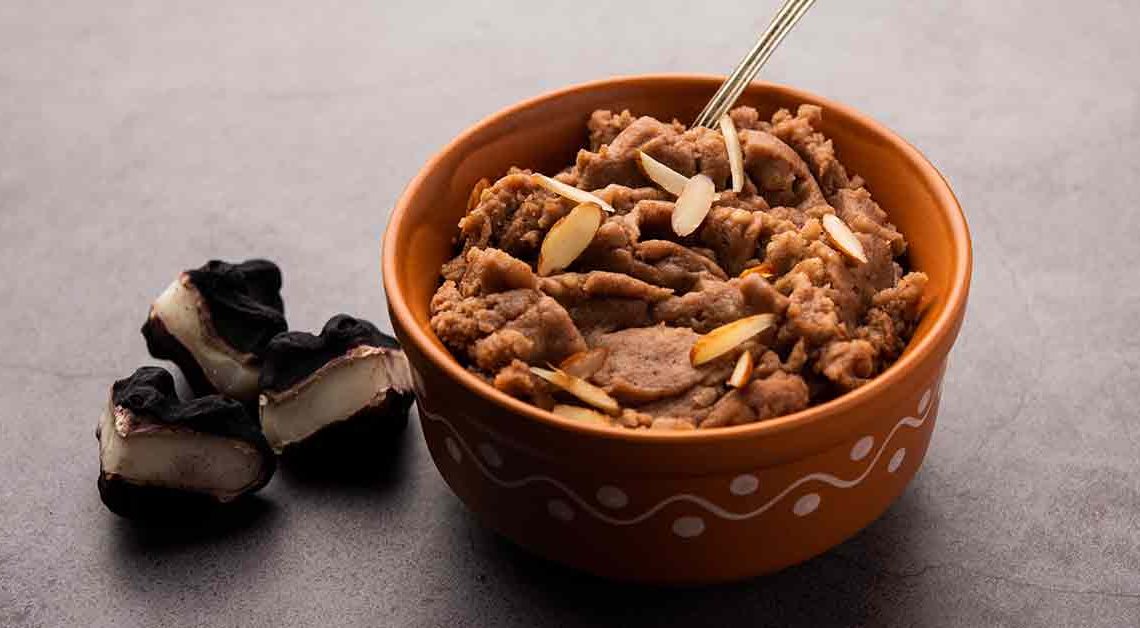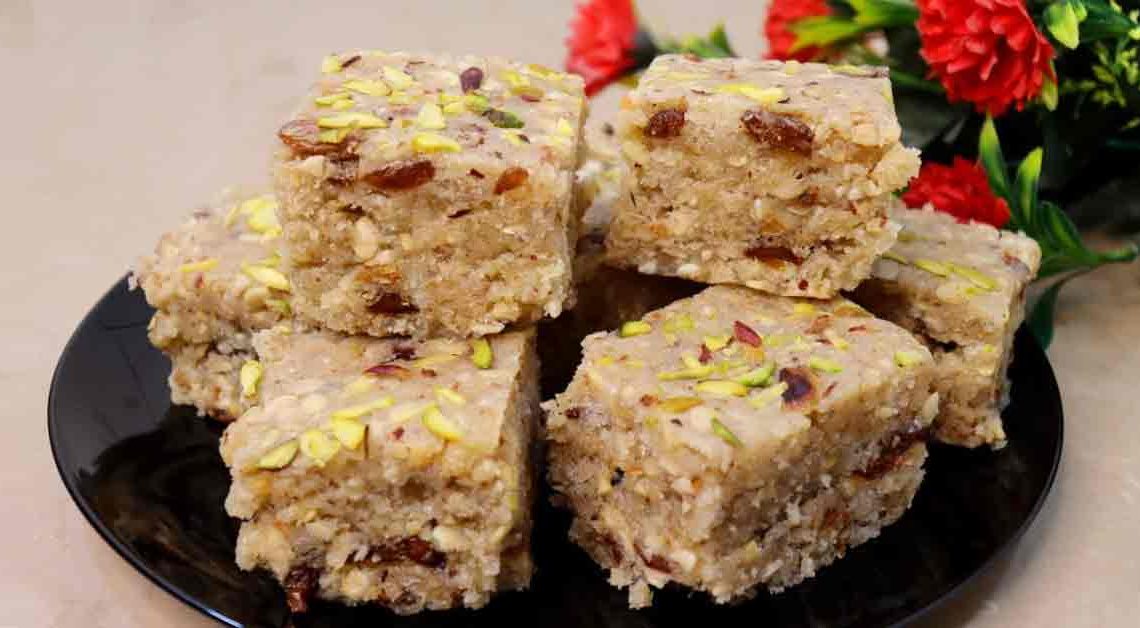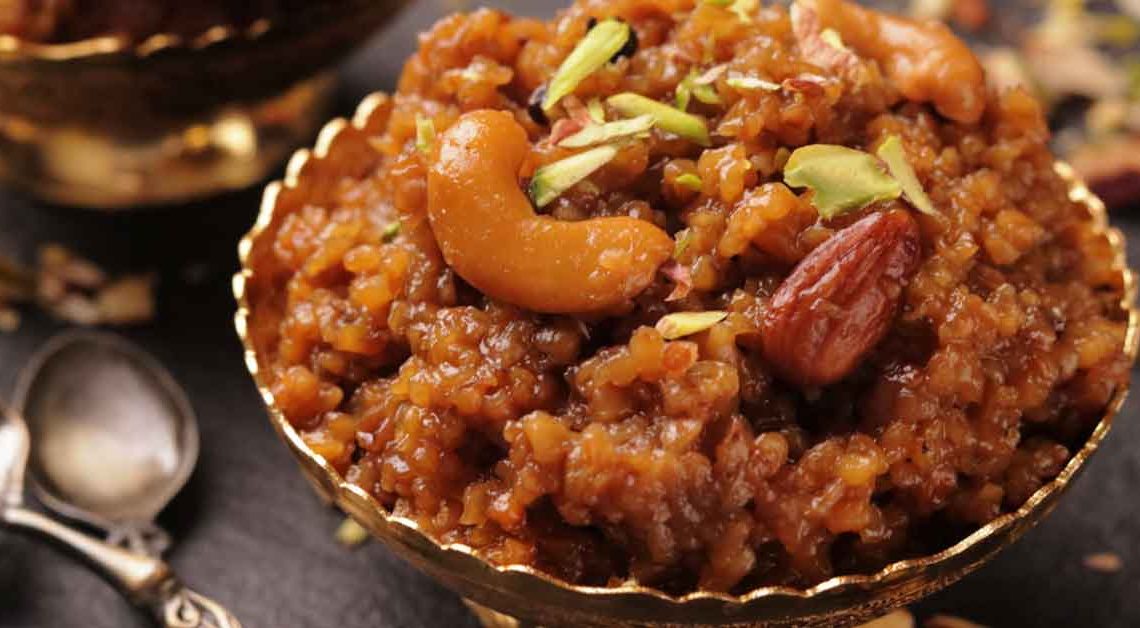Savor the Season with Singoda Halwa

Welcome to the enchanting world of Singoda Halwa on Mithainama, a culinary delight that transcends time and tradition. Nestled in the heart of India, this delectable dessert holds a special place in the hearts and palates of countless food enthusiasts. It’s a delicacy that not only tantalizes your taste buds but also takes you on a journey through history and culture.
Singoda Halwa, also known as Water Chestnut Halwa, is a sweet treat that has been enjoyed for generations. Made from the humble singoda (water chestnut), this dessert is a remarkable fusion of simplicity and decadence. It’s a symbol of festive celebrations, family gatherings, and the warmth of Indian hospitality.
In this blog, we’ll delve deep into the fascinating history and explore its role in various cultural celebrations.
But it is more than just a dessert; it’s a journey through the senses. The textures, aromas, and flavors will enchant your soul and transport you to the heart of India. Get ready to embark on a culinary adventure like no other, and let the world of Singoda Halwa mesmerize you. Your taste buds are in for a treat they won’t soon forget!
Origin of Singoda Halwa
Singoda Halwa, also known as Water Chestnut Halwa, has its origins in the Indian subcontinent. It is a traditional dessert that has been enjoyed for generations and is deeply rooted in the rich culinary heritage of India. The dish is especially popular in North India, where water chestnuts, locally known as “Singoda,” are abundantly available.
The origin is closely tied to Indian festivals and celebrations, particularly during fasting periods. During fasting, many people abstain from consuming grains, which led to the development of a variety of grain-free dishes. Singoda, being a starchy and nutritious tuber, became a natural choice for creating a delicious dessert during these fasting days.
While the exact historical origins are not well-documented, it has evolved as a beloved part of Indian cuisine over the years. It is not only enjoyed during fasting periods but also serves as a delightful treat on various festive occasions and special gatherings, showcasing the adaptability and versatility of Indian culinary traditions.
History of Singoda Halwa
Singoda Halwa, a delectable Indian dessert, has a rich history deeply rooted in culinary traditions and cultural practices. This sweet treat finds its origins in North India, where water chestnuts, known as “Singoda,” are abundant. It is closely associated with fasting periods, which are common in Indian religious practices.
The concept of fasting in India often involves abstaining from grains, making Singoda a perfect alternative due to its starchy nature. Over time, this versatile ingredient found its way into the kitchens of Indian households and became a key element in festive and celebratory cuisine.
This is not merely a dish; it’s a symbol of tradition and unity. It is often made during festivals and special occasions, symbolizing warmth and hospitality. Through the generations, it has become a cherished part of India’s culinary heritage, showcasing the country’s ability to turn humble ingredients into gourmet delights.
Cultural Significance
Singoda Halwa holds a significant place in Indian culture, particularly in North India, where it has cultural and culinary importance. Its significance can be understood in various ways:
Religious and Fasting Traditions: It is often associated with religious fasting, such as during Navratri and other Hindu festivals. Many people abstain from grains during these times, and water chestnuts (Singoda) become a key ingredient for making delicious and permissible dishes.
Celebratory Feasts: It is not limited to fasting periods; it is also a favorite dessert during festive celebrations. Whether it’s a family gathering, wedding, or special occasion, this dessert is prepared and served to signify the sweetness of these moments. It embodies the essence of hospitality and tradition during festivities.
Unity in Diversity: India’s cultural and regional diversity is evident in its cuisine and serves as a unifying factor, as it is enjoyed by people from various backgrounds and traditions, transcending cultural boundaries.
Where is Singoda Halwa Famous?
Singoda Halwa is particularly famous in the northern regions of India, where it has a strong culinary and cultural presence. Here are some of the states and areas where it is well-known and cherished:
Uttar Pradesh: It is popular in Uttar Pradesh, especially during the fasting period of Navratri and other religious festivals. It is prepared and enjoyed by people of all ages.
Punjab: In Punjab, it is a favorite dessert during celebrations and gatherings. The rich, flavorful dish is often prepared with ghee, cardamom, and nuts, making it a delightful treat for special occasions.
Rajasthan: In Rajasthan, it is often part of the extensive vegetarian and fasting menu. The state’s rich culinary traditions incorporate this dish during religious festivities and special events.
Interesting Facts and Trivia
Singoda Halwa is a fascinating dessert with a rich history and cultural significance. Here are some interesting facts and trivia related to Singoda Halwa:
- Singoda Halwa is primarily associated with fasting and is commonly prepared and enjoyed during Hindu fasting periods, like Navratri and Ekadashi. It provides a sweet and indulgent option while adhering to dietary restrictions.
- The name “Singoda” comes from the Hindi word for water chestnut. This dessert is made from the tubers of water chestnut plants, which grow in marshy or aquatic environments, and are widely available in India.
- It is known for its delightful textures. It has a smooth, creamy consistency while offering a satisfying contrast with the crunch of nuts like almonds and pistachios.
- The dessert like badam halwa, anjeer halwa is infused with aromatic spices, with cardamom being one of the most commonly used. These spices add a rich and fragrant layer to the flavor profile.
- Singoda Halwa is not just a dessert; it is a symbol of unity, tradition, and cultural diversity. It is enjoyed by people of various backgrounds, transcending regional and cultural boundaries.
Did You Know?
Singoda Halwa isn’t just a delicious treat; it offers numerous health benefits too! Here’s why you might want to savor this delightful dessert:
- It is naturally gluten-free, making it an excellent choice for individuals with gluten sensitivities or celiac disease. It’s also dense in nutrients, providing energy and nourishment during fasting periods.
- Water chestnuts, the main ingredient in Singoda Halwa, are known for their ease of digestion. They are gentle on the stomach, which is especially beneficial during fasting when the digestive system may be more sensitive.
- The natural sugars and carbohydrates provide a steady release of energy, making it an excellent choice for maintaining energy levels during long hours of fasting.
- Fasting periods can sometimes lead to nutrient deficiencies. The richness in vitamins and minerals helps ensure you get essential nutrients even when abstaining from regular meals.
- In Ayurveda, Singoda is believed to have cooling properties, making Singoda Halwa a sought-after dish during festivals that coincide with warmer seasons.







